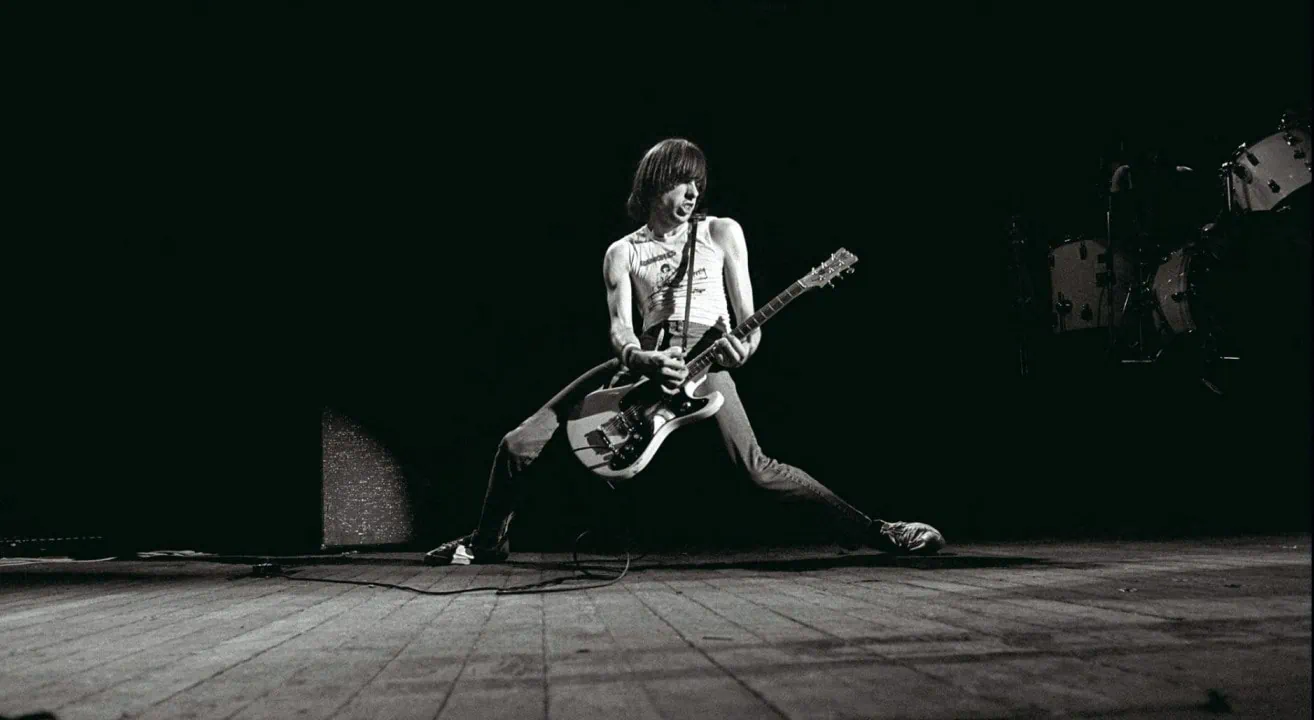One, two, three, four! Yes, you better get on your tight pants and zip up that leather jacket, because Johnny, Joey, Dee Dee, and Marky will punk-rock your heart!
I know, you just heard one of the Ramones records (or all of them) and the punk rocking spirit took over your very soul and now you want to sound like them. Well, I’ve been in those sneakers too and I know that, although it might seem simple and straightforward, those tones aren’t so simple to recreate.
But hey, worry not, because this punk rock lover is here to help you nail it exactly so you can power chord your way to fun. I’m about to unveil the guitars, amps, and (lack of) effects Johnny Ramone used to build the reputation of being too tough to die.
Are you ready? This is a one-way ticket to Punk Rock royalty and we’re leaving right now!
Table of Contents
Johnny Ramone Guitars
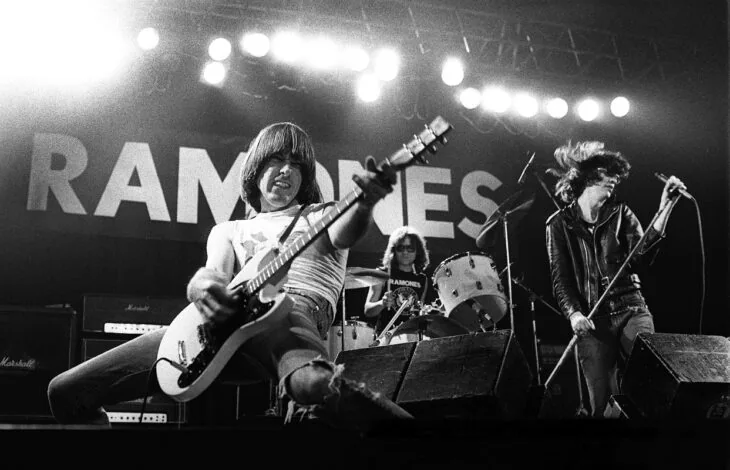
The Ramones loved surf music. That is to give up no scoop. They did covers for songs like “Surfin Bird” and had some tunes of their own in that style, like “Rockaway Beach”. Well, it’s not technically a surf tune, but you get the idea.
But why is it important that the Ramones were surf music fans? Well, because in the mid-70s, the almighty Johnny Ramone fell in love with a white guitar that was named after a very famous surf band: The Ventures.
The guitar’s brand was Mosrite, and unsurprisingly, the model that Johnny bought from Manny’s Music in New York was the Ventures II, a student-oriented guitar made to compete with Fender’s Duo-Sonic and Gibson’s Melody Maker lines.
The cool fact about that guitar is that it was used in every Ramones show from 1977 to 1996. That’s roughly 1,985 live appearances. The guitar sold recently at an auction for almost one million dollars.
By the time the guitar ended its rough and fruitful career, it had a weird configuration with a single-coil pickup near the bridge and a mini humbucker in the neck position. That and, of course, many battle scars.
Sadly, you can no longer buy a new Mosrite guitar like Johnny’s (unless you want to repurchase the original for a million dollars!). The good news is that two companies took this matter into their own hands and came up with very close models.
These companies are Eastwood Guitars and Hallmark Guitars.
The closest you can get, in my opinion, is with the Eastwood Mach II. A guitar that looks exactly like Johnny’s famous Ventures II. Yet, to be completely accurate, you should replace the bridge’s single-coil pickup with a DiMarzio FS-1 and the neck pickup with a Seymour Duncan SM-1.
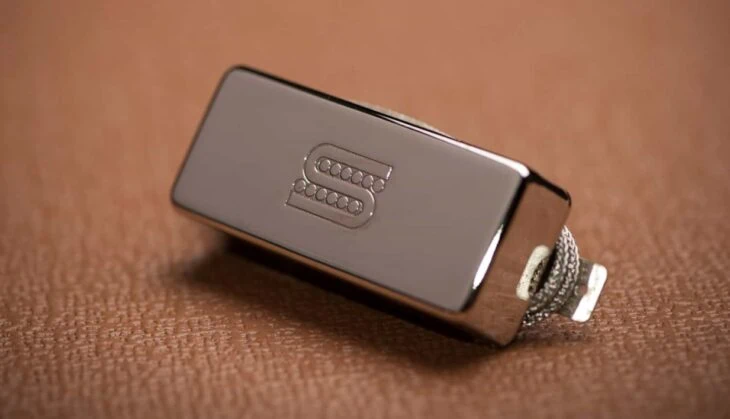
Did Johnny use other guitars during his decades-long career? Well, not really. He can be seen with a white Stratocaster in the very early days and a black Les Paul Custom in a TV show in the ‘80s.
Can you get close to Johnny’s tone with another guitar model? Well, I would say that you can get close to Ramones’ tones with any guitar that’s got a maple neck, rosewood fingerboard, maple, alder, or ash body, and a single-coil pickup close to the bridge.
A caveat about that is that the DiMarzio FS-1 is a pickup designed to give the shrill sound of a single-coil guitar the smooth roundness of a humbucker. Yes, besides being 25% louder than most stock pickups, it’s voiced with 7.5 bass, 5.5 low-mid, 5.0 high-mid, and 4.5 treble.
So, perhaps, you can get the guitar that Johnny’s model was competing against, a Fender Duo-Sonic. Also, if your budget isn’t that bulky, a Squier Sonic Mustang could do the trick as well.
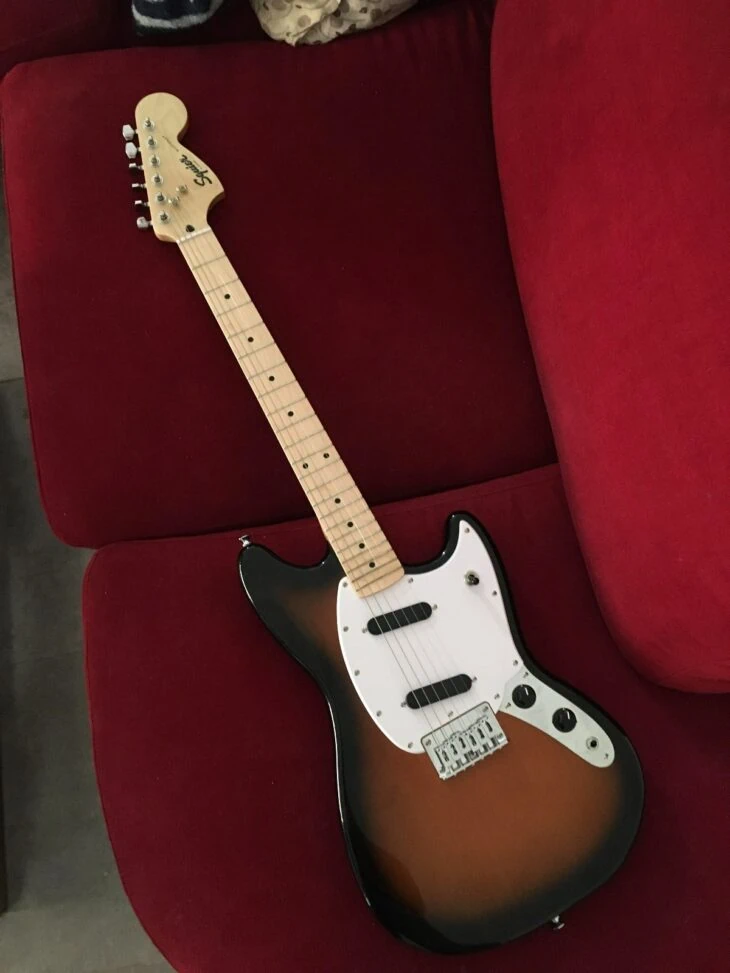
Remember, if you swap out the standard pickup for something closer to a DiMarzio FS-1, you’ll get closer to Johnny’s dark and round tone.
Johnny Ramone Pedals
Johnny Ramone didn’t use a single guitar pedal in his entire career. All he used was an A/B/Y box that directed the signal from his guitar to his amps or a Boss TU-12H Chromatic Tuner.
He did this to mute the sound of the guitar as he was tuning or in between songs (those brief seconds before the one, two, three, four came along to play the next tune).
You can use a modern Boss TU-3 tuner and it will silence your guitar whenever you engage it. For a true-bypass option, you can get a Boss TU-3W Waza Craft.
If you want to spend less, a Behringer TU300 Chromatic Tuner will do the trick just fine too.
Finally, I know I’m getting ahead of myself here, but the pedal you could use to get a Ramones-approved tone (who used amplifier overdrive) is a ProCo Rat. You have to beware of using a small amount of gain, the tone rolled off, and a high volume to get an overdriven/distorted/nasty sound out of it.

Johnny Ramone Amps
Johnny Ramone was a Marshall guy throughout his career.
When they were starting out, Johnny used a pair of 100-watt Plexi heads, also known as 1959HW. These are 100-watt, no-master, valve beasts that need to be very loud to do their thing. They’re more arena-friendly than bedroom (or local pub) friendly.
Its 50-watt version, the Marshall 1987X, could be a great replacement. If you’re looking for a more affordable alternative, the Marshall Origin 50 and Origin 20 can be good options too.
Johnny played these amps through a Marshall full stack (2x 4×12 cabinets) with stock speakers. He used a pair made of a Marshall 1960AX and a 1960BX.
Later on in Johnny’s career, he moved on to Marshall amps with a master volume. Yes, I’m talking about the utterly famous JCM800. Again, that’s a 100-watt valve head that is a tube monster and not at all suitable for small spaces.
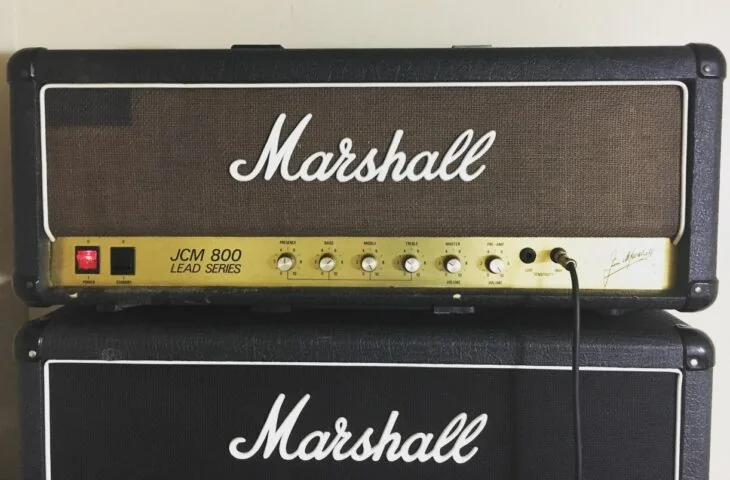
Marshall made two smaller versions of their classics, the Marshall SV20H Studio Vintage and the Marshall SC20H Studio Classic. These resemble the early-day Plexi heads and the JCM800 ones but with a wattage going from 5 to 20 watts.
Finally, for budget constraints, you can always count on Marshall’s solid-state MG series. For example, the Marshall MG15G and its bigger brother, the Marshall MG50GFX are also good options.
Although it’s not the most Ramone thing to do, you can also go with a Universal Audio UAFX Lion ’68 Super Lead Amp Pedal and go amp-less into your computer or the PA of the pub.
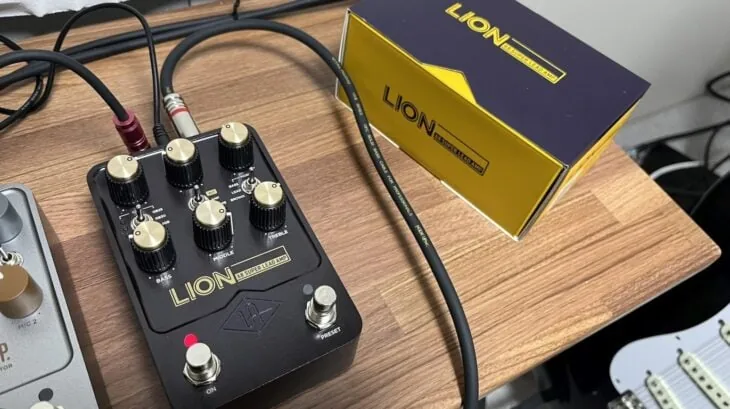
The Ramones Amp Settings
Now that you know what the amps are, let’s take a look at some of the settings Johnny used throughout his career. Let me clarify that Johnny’s tone isn’t really super distorted and always played with a single-coil pickup.
Therefore, where you see “10” in the gain knob, it’s what it would sound like with an overdrive pedal in 10, or the “Preamp” knob on your JCM800 in 10.
Ramones/Rocket to Russia
- Volume – 7
- Gain – 5
- Bass – 10
- Middle – 6
- Treble – 4
- Presence – 2
Too Tough to Die/Animal Boy
- Volume – 7
- Gain – 8
- Bass – 10
- Middle – 7
- Treble – 6
- Presence – 3
Mondo Bizarro/Acid Eaters
- Volume – 9
- Gain – 10
- Bass – 10
- Middle – 7
- Treble – 4
- Presence – 3
Adios Amigos/We’re Outta Here
- Volume – 9
- Gain – 10
- Bass – 10
- Middle – 7
- Treble – 6
- Presence – 3
The Bottom End
Johnny Ramone’s tone and no-frills approach were an inspiration for generations of musicians who came after him. He found beauty in simplicity and toured the world many times with a minimalist approach that drove crowds crazy.
The man is gone, the tone remains, and, in punk rock, attitude is non-negotiable.
Happy (power chord) playing!

